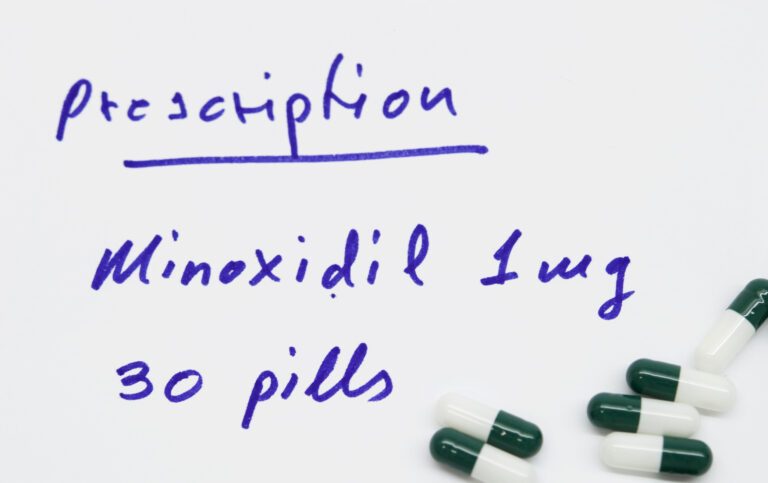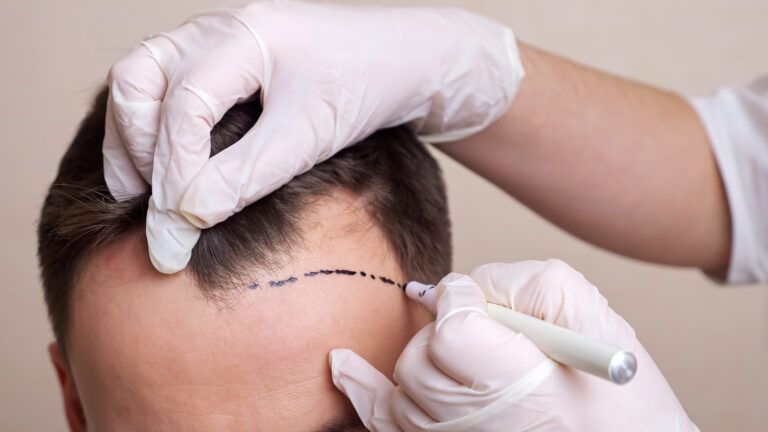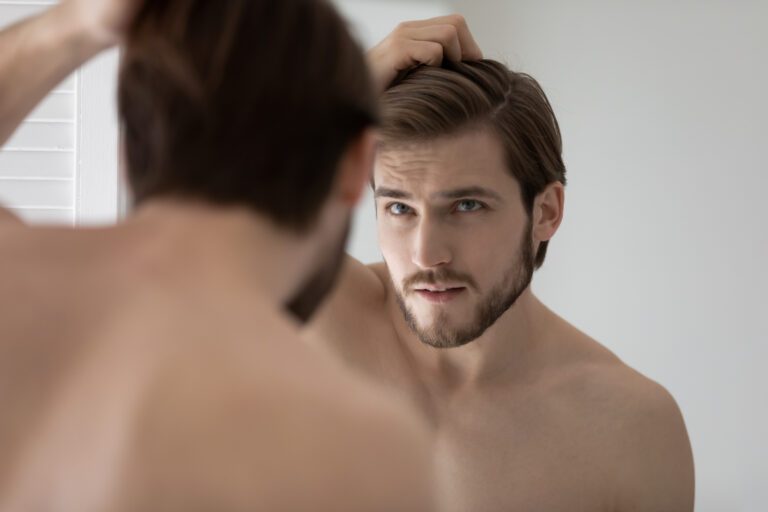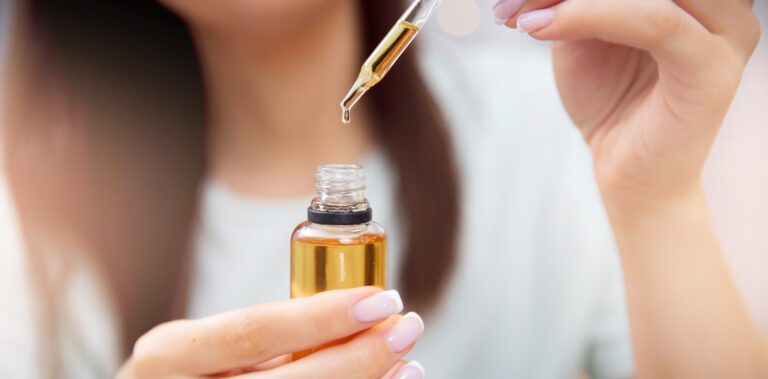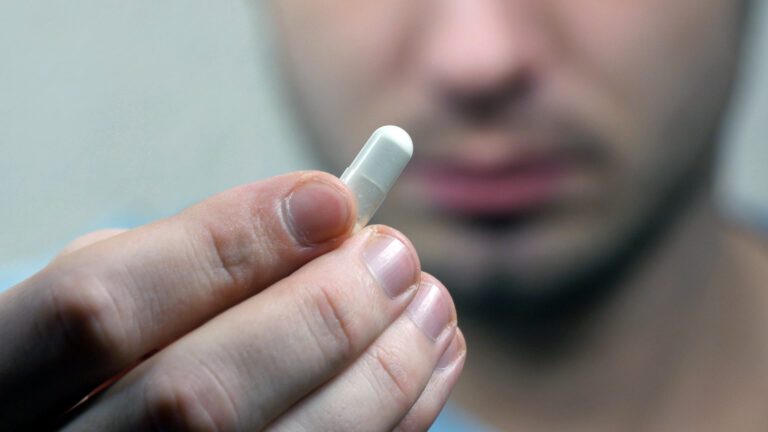Does Finasteride Lower Testosterone? What You Need To Know
Finasteride is a drug used to treat hair loss (androgenetic alopecia) and benign prostatic hypertrophy (BPH) in men. It does that by blocking the 5 Alpha-reductase enzymes and inhibiting the conversion of testosterone into dihydrotestosterone (DHT).
Finasteride, known as Propecia and Proscar, has a reported impact on the male’s libido. In a minority of users, it can even cause erectile dysfunction. That’s why people usually associate it with lowering testosterone levels but does finasteride lower testosterone?
In fact, this is a common misconception. If anything, finasteride actually increases the testosterone levels in the male’s body.
In this article, we provide you with everything you need to know about finasteride’s side effects and what to expect when taking it. So, keep reading.
What Happens When You Take Finasteride?
When taking finasteride, it inhibits 5-Alpha reductase type 2. This intracellular enzyme is responsible for regulating the conversion of testosterone into the metabolite hormone, dihydrotestosterone (DHT).
DHT is an entirely different hormone and even more androgenic than testosterone. About 10% of the testosterone in the male body turns to DHT. This hormone binds with the hair follicles and causes a shorter growth phase of the hair cycle.
In turn, the hairs fail to grow and become much thinner with time. This process is named “hair follicle miniaturization.”
In addition to that, DHT causes the prostate to grow bigger. That’s because it stimulates cell growth in the prostate glands during later adulthood.
When finasteride inhibits the 5-Alpha reductase, it prevents the conversion of testosterone to DHT. As a result, it ends up treating hair loss in men and causes the prostate to shrink back to its normal size.
What Are the Most Common Misconceptions About Finasteride?
People often worry about drugs’ side effects, especially when taken for cosmetic purposes. In fact, common misconceptions about certain medications may cause users to refrain from taking them.
Take a look at two of the most common misconceptions about the use of finasteride medicines.
1. It Lowers Testosterone Levels
Some finasteride users have reported decreased libido when taking medicines like Propecia and Proscar. Other minority users even claimed that finasteride use causes erectile dysfunction.
People tend to wrongfully associate this with lower testosterone levels, but is it true? Does Propecia lower testosterone?
The answer is no.
After taking finasteride and preventing the conversion of testosterone, the percentage of the hormone that would have otherwise turned to DHT remains as is. So, the testosterone stays unaffected.
Consequently, this causes significant serum and tissue DHT concentration decrease. Since testosterone now has nowhere to go, its levels increase indirectly.
Typically, the levels of testosterone produced by the body are the same. However, the usually converted percentage fails to turn to DHT as it normally does.
2. It Inevitably Causes Gynecomastia
It helps to know that testosterone doesn’t only convert to DHT. It also aromatizes into estrogen. Naturally, the more testosterone circulating in the body, the more it aromatizes into estrogen. So, while you have less DHT in your body, the levels of testosterone and estrogen increase.
As a result of chronically elevated estrogen levels, men can get Gynecomastia.
Gynecomastia is swollen male breast tissues, and people commonly refer to it as “man boobs.”
It’s true that taking finasteride in high dosage can cause Gynecomastia. Nevertheless, this only happens if you already have high estrogen levels, to begin with. That’s why it’s essential to have baseline blood work before taking such drugs.
Supposedly, if you prevent estrogen levels from getting out of the normal range for men, it’s impossible to develop Gynecomastia.
On the other hand, being on the high end of normal estrogen levels while taking finasteride may require an Aromatase Inhibitor (AI). Just like finasteride does with inhibiting the conversion of testosterone into DHT, AI inhibits the aromatization of testosterone into estrogen.
That said, if your estrogen levels are within the normal range even with finasteride use, you shouldn’t worry about Gynecomastia.
Does Finasteride Increase Testosterone?
Yes, it does.
Within 24 hours of taking an oral dosage of finasteride 1 mg, it suppresses DHT levels in the body by 65%. In addition, the levels of testosterone increase by about 15%.
Finasteride also increases estradiol, which is the body’s primary estrogen hormone. That’s because it naturally rises with the increase of testosterone, as more testosterone aromatizes into estrogen.
What Are the Side Effects of Finasteride?
There has been a negative image associated with using finasteride, whether for treating hair loss or BPH. This caused some physicians to hesitate when prescribing such drugs.
However, the side effects of taking finasteride don’t happen to all users. So, it’s safe to say that even if these side effects occur, medication withdrawal usually resolves the issue.
The main side effects reported by a small percentage of men using finasteride were as follows:
- Decreased libido
- Erectile Dysfunction
- Decreased ejaculation volume
- Ejaculation dysfunction
- Hypersensitivity reaction
- Gynecomastia
- Severe myopathy
- Acute pancreatitis
Finasteride Effect on Testosterone Levels and Sexual Functions
Generally, the risks associated with taking finasteride are low. The majority of men taking this drug have reported very few to no undesired effects. As opposed to the medicine’s success and effectiveness, these issues are minimal.
Being an FDA-approved medicine, finasteride underwent massive testing and research. That’s why a lot of data is available about its side effects. It’s worth mentioning that taking a higher dosage of finasteride may increase the possibility of developing side effects.
A few of finasteride known side effects are related to sexual functions, such as:
1. Decreased Libido and Erectile Dysfunction
Decreased libido in the minority of finasteride users is often a result of DHT suppression. In addition to that, the increase in estrogen levels also contributes to this.
The inhibition of DHT and elevation of aromatization are what can cause decreased libido. As a result, when there’s not enough testosterone circulating in the male body, it influences the natural erectile function.
The reason this doesn’t happen to everybody is that it only affects those who have naturally low free testosterone levels. That’s why running blood work is always recommended. The same goes for men with already high estrogen levels.
According to ResearchGate, only 1.8% of men reported reduced interest in sex or decreased sex drive when taking finasteride. That’s compared to 1.3% of men reporting the same issue taking a placebo medicine.
Similarly, 1.3% of men taking finasteride experienced erectile dysfunction, as opposed to 0.7% of men using a placebo.
2. Ejaculation Disorder
Another reported side effect of using finasteride is a reduction in ejaculatory volume. This means that the semen released becomes less than usual for any given man.
Generally, finasteride causes a notable reduction in all semen parameters. That’s with an exception of sperm morphology, which is the size and shape of sperm. Having said that, this reduction doesn’t fall below levels to affect fertility in any way.
The same previously mentioned study revealed that 0.8% of men reported having decreased ejaculation volume after taking finasteride, compared to 0.4% using a placebo.
Topical Finasteride
Finasteride is available as oral tablets and topical spray. Unlike topical minoxidil (MNX), the topical version of finasteride isn’t FDA-approved yet.
However, the results of using topical finasteride that’s applied directly on the scalp are promising when it comes to hair growth. This is great news, especially with the concerns regarding the long-term use of the medicine and its side effects.
A study conducted on 30 male patients suffering from Androgenic Alopecia in India showed remarkable results using topical finasteride.
During this study, they divided the patients into two groups where they gave group A a treatment of topical finasteride (0.1%) with minoxidil (5%). Group B, on the other hand, received oral finasteride (1mg) tablets with topical minoxidil.
By the end of six months, both groups showed quite similar results, with a significant increase in hair counts.
What’s more, mixing topical finasteride with Minoxidil can also be highly effective. That’s because Minoxidil works on dilating the blood vessels. In turn, it helps in delivering other treatments applied to the scalp more effectively.
All in all, there aren’t enough studies proving that topical finasteride is as effective as the tablet form. So, it’s still too early to jump to conclusions. Nevertheless, topical finasteride may act as an excellent substitute for systemic finasteride in the future.
A Final Thought
Many concerns surround the use of finasteride for men and the side effects related to it, such as decreased libido and erectile dysfunction. Some people think these side effects happen as a result of low testosterone levels, but is this true? Does finasteride lower testosterone?
Finasteride doesn’t lower testosterone. Instead, it increases testosterone levels by about 15%.
However, the decreased libido happens for a whole other reason, which is the inhibition of DHT and elevation aromatization. When aromatization increases, estrogen levels can spike as well.
That’s why experts recommend running blood tests before taking any medication, especially when it messes with the body’s hormones.
Remember that consulting your physician and talking about your treatment options regarding any issue is what you should always do.


